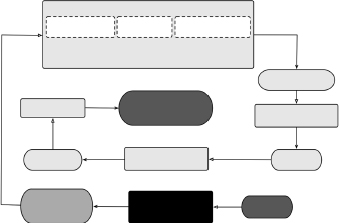CHAPTER 3
PROBLEM DEFINITION: DETAILING CUSTOMER REQUIREMENTS
What does the client require of this design?

IN CHAPTERS 1 and 2, we defined engineering design and described a process for doing design. Now we turn to problem definition, when we try to understand what the client requires in this design by casting the design problem in terms of objectives to be achieved, constraints that must be satisfied, and functions the design must perform. As our starting point we closely examine the design problem as stated by the client, in order to make us aware of the design space in which we will be working.
Recall that in Figure 2.1, revising the problem statement, clarifying objectives, identifying constraints, and establishing functions all appeared in the same “block,” which is the highlighted black element on the design icon just above. This is no accident. Designers generally review prior art, confer with clients and users, and speculate among themselves about all of these important intellectual objects simultaneously. This allows the designers to efficiently gain information from their sources, but this information must ultimately be organized into a framework. In this chapter, we look at how we start on the tasks of problem definition, beginning with the initial statement from the client. We then present ways to organize all of the information found from our design inquiries, and ...
Get Engineering Design: A Project-Based Introduction, Fourth Edition now with the O’Reilly learning platform.
O’Reilly members experience books, live events, courses curated by job role, and more from O’Reilly and nearly 200 top publishers.

